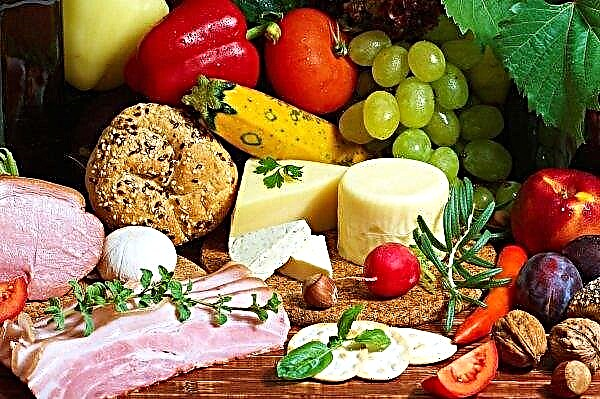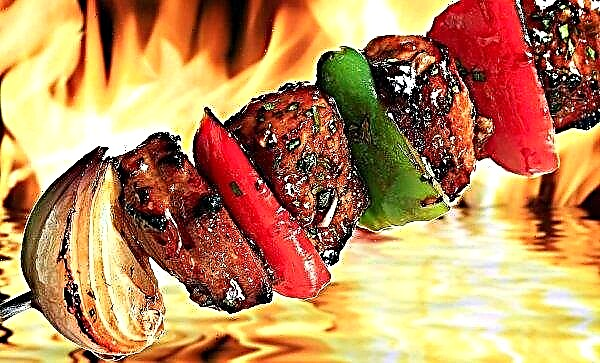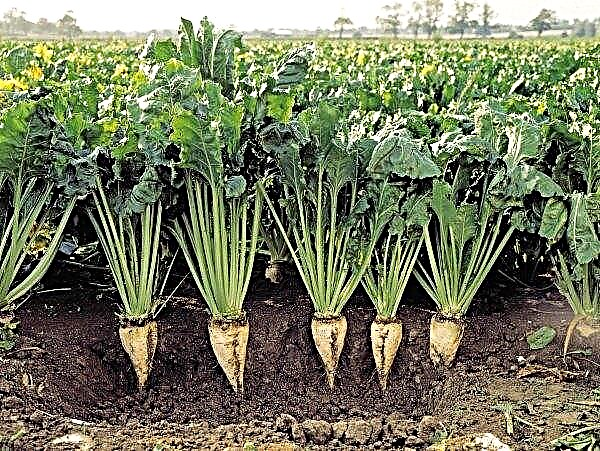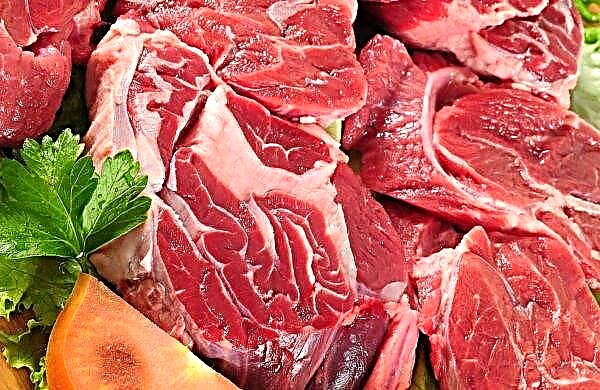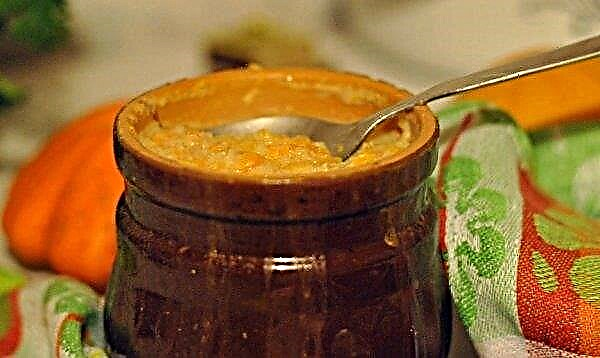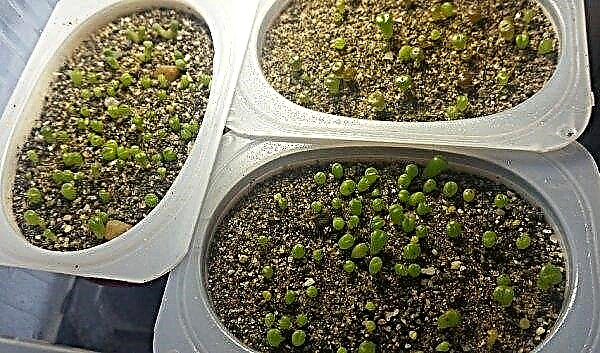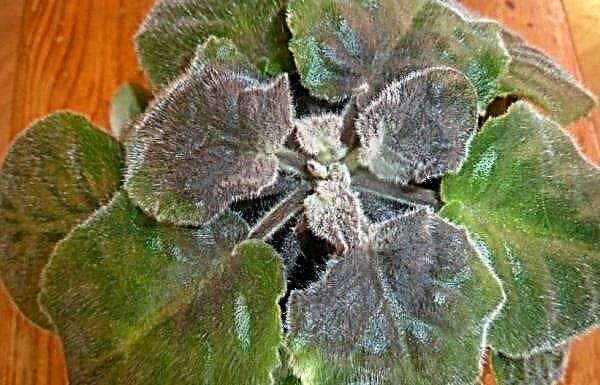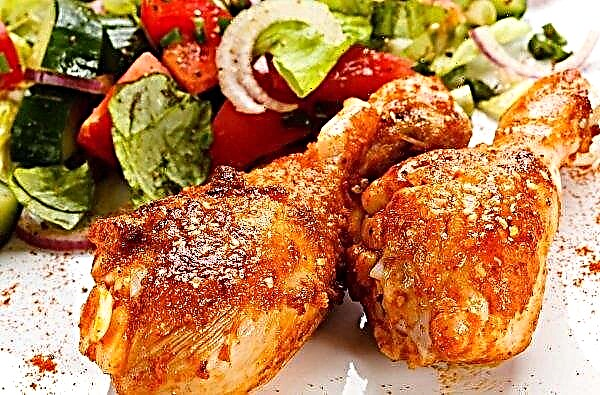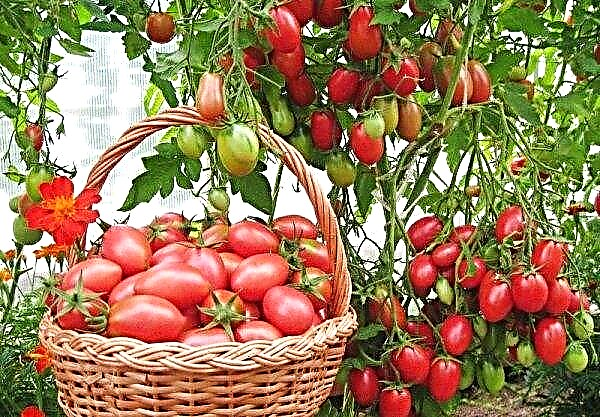Honey is a very useful product and, fortunately, is not perishable at all. Moreover, subject to certain rules, it can be stored for years, decades and even centuries - however, for this it is important not only to create suitable parameters for temperature, lighting and humidity, but also to choose the right packaging.
In this review, we will talk about in which containers it is best to store bee products, as well as how the process of making a wooden barrel for bee honey in artisanal conditions is carried out.
Variety of barrels for honey
According to generally accepted state standards, for storage of honey, the following types of containers can be used:
- wooden barrels with an inner liner made of a polymer material (plastic);
- metal (tin, aluminum, from aluminum alloys, from steel - stainless, decapitated or sheet) barrels and flasks for food liquids, treated inside with a special varnish (enamel);
- plastic containers for food;
- ceramic vessels;
- glass containers;
- clay (ceramic) barrels coated with glaze from the inside.
Some types of containers should be considered in more detail.
Wooden
Regarding the use of wood for storing honey, the opinions of professional stewards and the official position of government bodies are somewhat different.
So, despite the fact that our ancestors have long kept honey in wooden tubs and barrels, sometimes only paved with wax or paraffin inside, from the point of view of modern science, such material is still not considered the best option.
Important! If you store honey in a tree, over time the product may darken and become bitter in taste; in addition, the natural aroma of the product in a similar container also changes.
If you follow the state standard, direct contact between wood and honey is not permissible at all: wooden barrels for honey of industrial production necessarily contain polystyrene inlaid bag, that is, the tree is actually located only outside, "for beauty", in fact the container is plastic.
For this reason, in addition to well-waxed barrels, many coopers offer for sale beautiful and spectacular wooden products for honey, made in such a way that a standard glass jar can be inserted inside.
As a material for the manufacture of such products, wood of linden, beech, birch, cedar, aspen, willow, plane tree or alder is used. But pine, spruce and other conifers are not suitable for this purpose, since the aromatic resins that make up their composition interrupt the natural smell of honey.
It is also important that the tree is well-dried (maximum permissible humidity is 16%). By volume, such containers can be different - from 1 to 200 liters.
- The disadvantages of wooden packaging, with all its attractiveness, include:
- very high cost (this is the most expensive material from the entire list);
- lack of absolute tightness (if you use a conventional barrel without a plastic liner), which leads to certain losses due to natural evaporation - for this reason, a tree is economically justified for storing large volumes, but not everyone can afford such a container;
- the buyer must have sufficient knowledge to select a quality product from the right material (not every tree is suitable for storing honey, but the product will leak in a poorly assembled barrel).
In addition, wooden containers to maintain tightness must be kept filled in high humidity conditions, otherwise the tree will dry out and the container will become unusable for liquid products.
Plastic
According to a consensus among consumers, plastic is absolutely not suitable for storing honey (and this is despite the fact that the product is sold most often in such containers). In reality, not everything is as bad as it might seem.
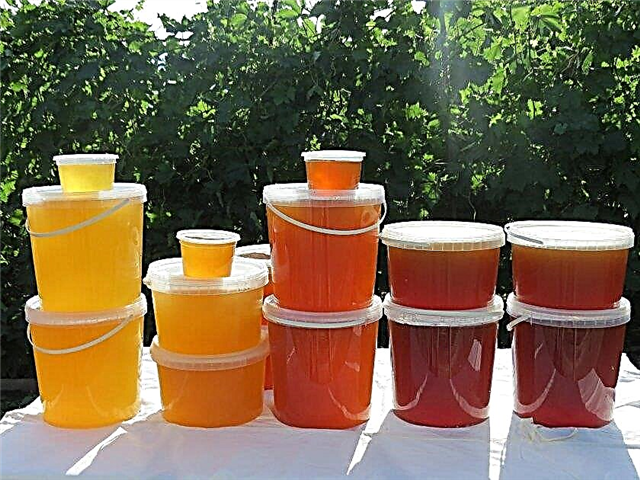
The main danger of polymeric materials is that when heated, some of them can release substances harmful to our body.
However, the proper storage of honey involves observing a number of clear rules, the main of which are darkness and coolness (ideally, the container should be in the cellar or refrigerator, where the temperature range is maintained within + 5 ... + 10 ° С).
Thus, if the product is stored correctly, plastic is a completely safe material for these purposes, the only drawback of which is “unnaturalness” - it is more likely a psychological than a real problem. Moreover, plastic is much more convenient, cheaper, easier and more reliable than most other materials from which honey containers are made.
Important! At room temperature, the beneficial properties of honey last for no more than six months, and when heated above + 40 ° C, the main value of the product is completely lost. At the same time, lowering the temperature to -35 ° C for honey is not critical.
However, the foregoing applies only to those types of plastic that are suitable for use with the purpose of storing food products, so the presence of appropriate markings on the product must be checked before purchasing it.
Clay
Clay, like wood, is a natural material, but as a container for storing honey is far from unique. The foregoing, however, applies only to unprocessed clay, and the reason here is its ability to “breathe” and absorb moisture. Since natural honey, which did not have time to crystallize, consists of water by about 22%, the structure of the product can significantly change when it loses its liquid.
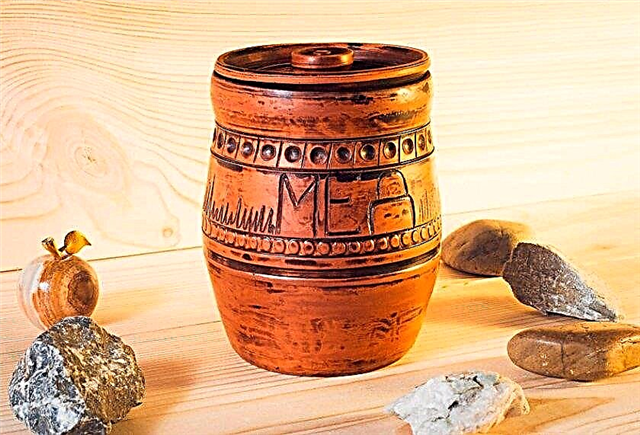
But ceramics, that is, burnt clay, coated from the inside with special glaze, is an excellent option. This material is chemically passive, environmentally friendly, non-toxic, functional, durable, and also has low thermal conductivity, which allows it to be much better to maintain a constant temperature and humidity inside it.
It remains only to add to the above that a good manufacturer can create ceramic honey mens, which are real works of art. Thanks to the spectacular colors, as well as beautiful and intricate hand-painted paintings, such an accessory can become an original and worthy gift that can harmoniously fit into the interior of any kitchen.
For storage of honey, clay and ceramic pots of small volume are usually used - from 0.5 to 1.5 liters. The dimensions of such products (height and diameter), respectively, as a rule, do not exceed 12–18 cm. Thus, this container is rarely used today to store large stocks.
Did you know? In the tomb of Tutankhamun, archaeologists, among other values, discovered a clay jug with honey, and when they opened the container, it turned out that the product, which had lain for more than three thousand years in a state of complete rest, not only retained its taste and aroma, but did not even crystallize!
Glass
Another common honey storage material is glass. In principle, any glassware can be used for this purpose, it is only important that there is a sealed lid on it (a prerequisite that is relevant for any container).
Best for this role is the option of heat-shrinkable plastic lids for home canning. They are made of high-quality food-grade polyethylene, due to which they are very tight to the neck, do not let air in, do not scroll and do not deform during operation.
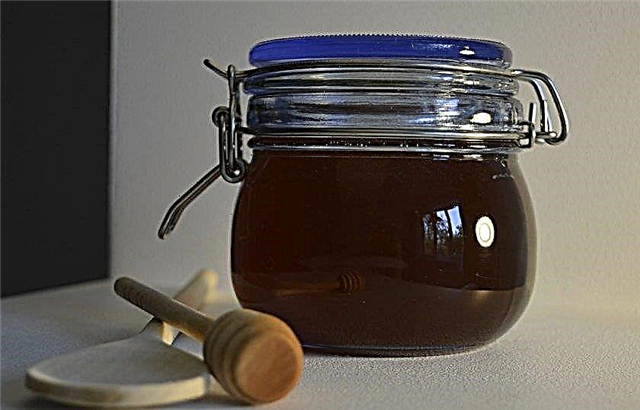
You can also use twist-off twist-off metal caps if the appropriate thread is provided on the container - it is only important that the special coating applied to them is not damaged, otherwise, when it comes into contact with a rusting sheet, the honey will oxidize and turn into a very harmful product .
Another twist option is glass covers with a special rubber o-ring and metal clips. Such a container is not only hermetic, but also has a very spectacular appearance.
In the line of glass products for storing honey you can find real masterpieces. For example, the well-known Czech company Crystal Bohemia, famous worldwide for the production of blown glass products using ancient technologies, offers for sale a small, only 350 ml, crystal honey barrel, decorated with a bronze bee on the lid and a bear figure, like as if trying to put the container on his back.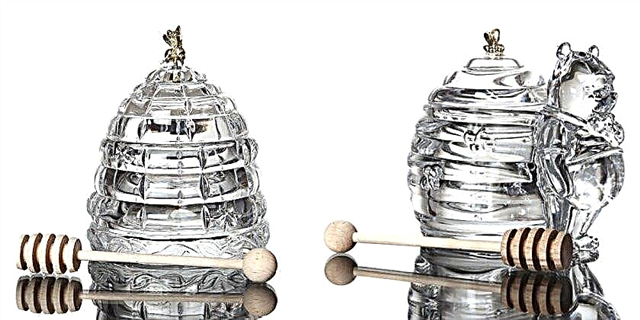
The kit also includes a spectacular spoon for honey, but not of crystal, but of wood. The owners of this miracle claim that, filled with honey, it becomes very similar to a wooden barrel; on the other hand, in the overflow of sparkling faces, the amber color of the bee product looks even more appetizing.
Products of this kind, of course, are intended to supply honey rather than to store it, however, even simpler glassware for these purposes is usually not very large.
On average, it is recommended to store up to 4 dm of product in glass containers - accordingly, specialized containers are available in volumes from 100 ml to 4.25 liters. Industrial stocks of the product are stored, as a rule, in metal barrels.
Did you know? Aluminum is part of the chemical composition of many foods, including it in honey. It is estimated that every day a person on average consumes 30 to 50 mg of this microelement with food, and the medicine considers such doses to be absolutely safe.
In which barrels is it best to store honey
Subject to the above reservations, honey can be stored in any of the following types of dishes. It is better that the container is not transparent, since sunlight adversely affects the chemical composition of the product, although the color, taste and even aroma may remain unchanged. Poorly suited for honey and too large volumes: the maximum capacity of the tank, regardless of the material from which it is made, should not exceed 200 liters.
- The main requirements for containers are also:
- lack of extraneous smell;
- chemical neutrality;
- the presence of a tight cover, which should always be tightly closed.
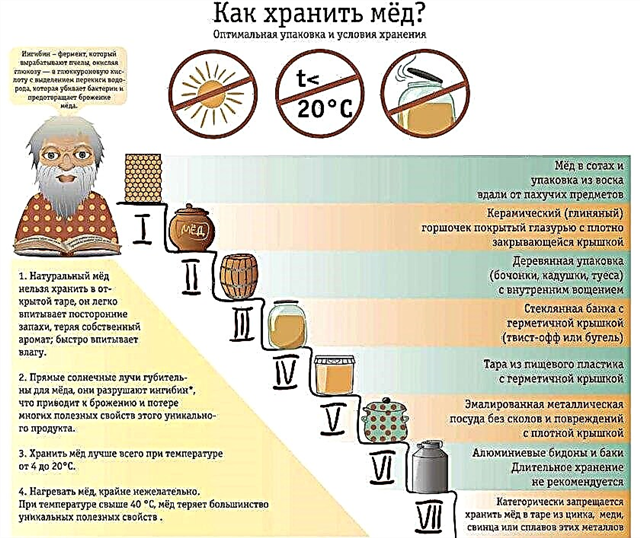
Metal containers for honey should have a special coating. Although the state standard allows the use of aluminum utensils for these purposes, many beekeepers caution against such containers, since aluminum is a metal with a fairly high chemical activity, and its accumulation in the product with subsequent ingestion into the human body is considered harmful.
However, the opinion of experts in beekeeping regarding aluminum utensils is worth considering, since the product can change taste in it, especially during long-term storage.
And here galvanized, copper and lead tanks they are categorically not suitable as containers for honey, because, reacting with these metals, the product is oxidized, and this process is associated with the release of toxic substances that are really dangerous for health. The above fully applies to products from ferrous metals.
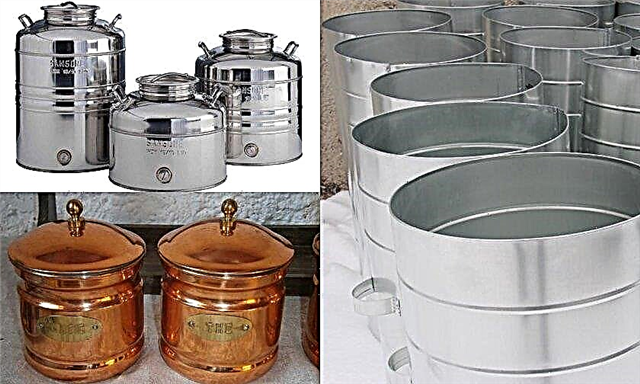 It is absolutely forbidden to store honey in such containers!
It is absolutely forbidden to store honey in such containers!
How to make a barrel yourself
Cooperism (the so-called process of making wooden barrels, barrels, tubs and other similar containers) is an ancient craft bordering on art. Its secrets are transmitted by dynasties from generation to generation, and real masters select the working tool individually for themselves, taking into account not only personal preferences, but also their own physiological parameters - height, palm size, etc.
To master such a technology or to transfer at least its basic principles within the framework of one article is a futile task, therefore, the information below should not be regarded as a direct guide to get started, but only as interesting information that is useful for general development.
Important! A real wooden barrel is made without glue. The art of the master is to fit the details to size and hold them with the help of special hoops so firmly that the resulting container holds not only viscous products such as honey, but also liquids - wines, cognacs and pickles for vegetables.
Material selection
A classic keg for honey is made from linden. It is this wood that is considered the best for this particular product (it is also used for salting and caviar). Chinara and aspen can also be considered good options, with branches, alder and poplar less preferred.
- Barrels from:
- oak - the product darkens in them;
- coniferous trees - due to the already mentioned characteristic odor (resin).
A few words can also be said about birch barrels. They are best used for fermenting cabbage, soaking apples, pickling cucumbers, mushrooms, meat and fish, but some housewives still store honey in them.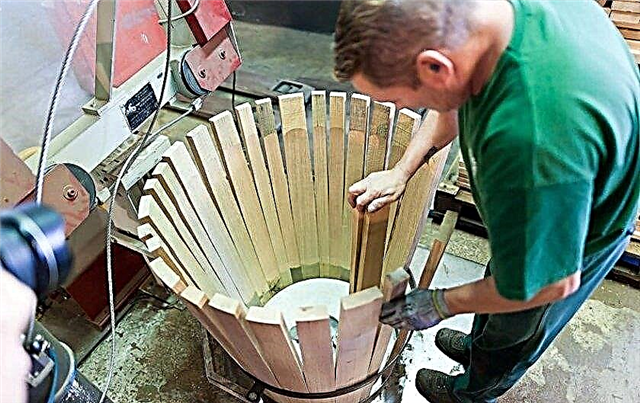
The content of so-called extractive substances (components that can get into the product from the container in which it is stored as an extract) in the birch is much less than in honey, but still more than in linden and aspen. Such an extract will not harm the pickles and urinations, and even enrich their taste, but honey is not needed at all. Therefore, before pouring honey into a birch barrel, it should be very carefully treated with wax from the inside.
Important! Linden barrels practically do not dry out, therefore they can be kept empty, which is a very valuable advantage that owners of oak products can only dream of.
In addition to chemical neutrality, linden and aspen have other qualities that are convenient for a cooper. So, aspen swells very well, which makes products from it very tight, linden does not require soaking (like oak) and is extremely easy to process, so, according to the masters, working with it is a pleasure. Finally, both linden and aspen have a very beautiful light color, which makes the products of them look light, “funny” and at the same time very beautiful household items.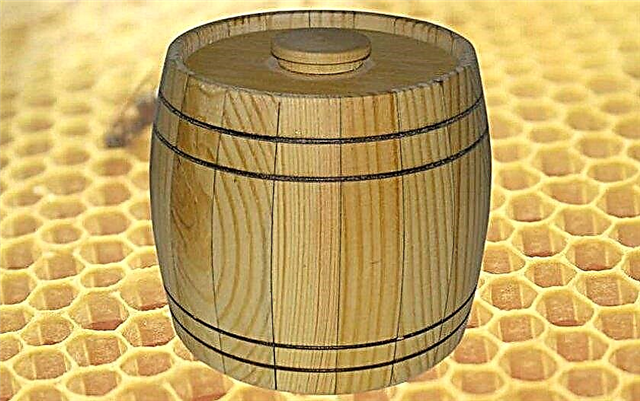
Tools
In their craft, coopers use the following tools:
- a circular saw;
- a joinery specifically designed for barrel work;
- a device for trimming the edges of wooden parts;
- a pole gate, a chain coupler or a frame gate machine, or other coupling device;
- cooper staple;
- tightness for a hoop;
- cooper tool for cutting a morning (groove into which the bottom of the barrel will be inserted);
- clamps for collecting barrels (metal or wooden);
- templates, drawings, patterns;
- humpback planer;
- cooper jointer (sniff) or jointer planer;
- curved knife with two handles for planing (brackets);
- heels;
- yoke, drawstrings, ropes, wires or other tightening tools;
- steel staples;
- sandpaper;
- ax;
- hammer;
- steel stand in the form of a beam for the manufacture of hoops.
Did you know? Honey is often called the drink of the gods. Perhaps the sources of this comparison should be sought in ancient Greek mythology, in which there is a mention that the daughter of King Crete, Melissa, fed little Zeus precisely with the product of the production of bees.
Step-by-step instruction
The manufacturing process of a wooden barrel takes place according to the following scheme:
- Staple making, that is, the boards from which the future barrel will consist. You can make them either from ready-made boards or from a log, but in the latter case, you can use only the lower part of the tree trunk, up to the first branch.At the first stage, the wood must be raw, it is dried later, after "cutting", and the drying process takes at least a month. After drying, the boards should be planed, acting strictly according to the prepared pattern - first from the outside, then from the inside and last of all from the sides.
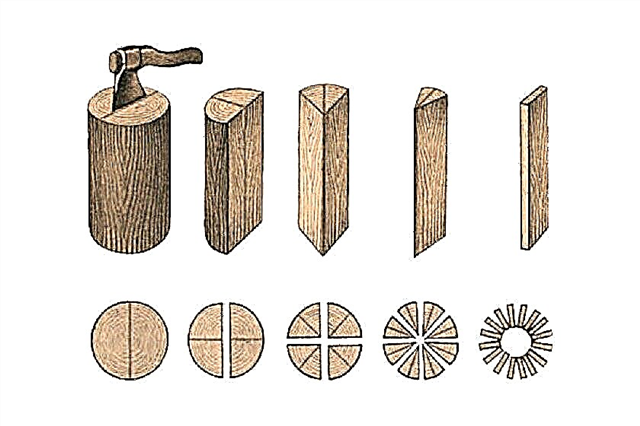
- Hoop making. Wood can serve as material for this, but more often metal is used - hot-rolled steel strip 1.6–2 mm thick. With the help of a hammer, the tape must be shaped into a ring, then cut holes in it for rivets, and then flare the inner edge.
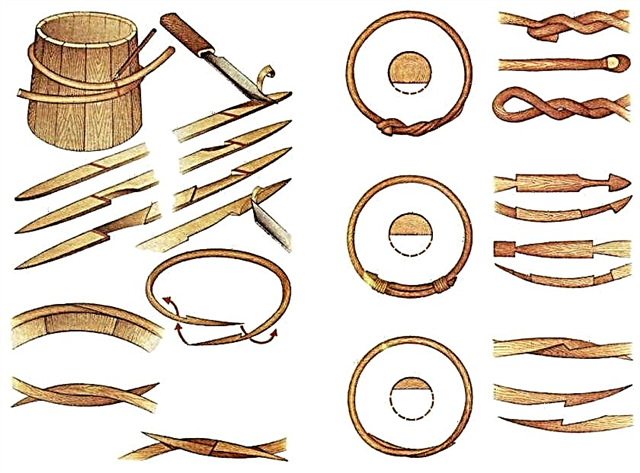
- Barrel skeleton assembly. First, with the help of steel brackets, two rivets must be attached to the hoop, placing them opposite each other. Then, from one of the staves towards the other, the following details begin to be added until one half of the skeleton is assembled first, and then the other. Next, the hoop is upset and the density of the rivets is checked, and at this stage, a good master “seats” the details of the barrel so that you can add another riveting and ensure the necessary tightness of the future product. When the skeleton is assembled, the remaining hoops are installed - first fart (in the center), then chops (located at the edges). Before assembling the second side of the riveting, it is necessary to tighten, for which a special tool is used - a yoke, or, if it is not, ordinary ropes.
- Production of bottoms of the barrel and their insertion into the skeleton. To the bottom entered tightly, the so-called persistent groove is performed in the skeleton. Before starting the assembly, loosen the morning hoop, insert the bottom part into the groove with one side, then carefully bend it into place with a hammer and then tighten the hoop again. In one of the donors, it is important not to forget to drill a hole into which the product will be poured, as well as to make a wooden cork for it.
 1 - insert rivets into the hoop; 2 - stuffing of a neck wrap; 3 - steaming the rivets of the skeleton; 4 - tightening the rivets with a collar; 5 - pulling the morning hoop; 6 - ready ostoy; 7 - bottom insert; 8 - putting on the morning hoop
1 - insert rivets into the hoop; 2 - stuffing of a neck wrap; 3 - steaming the rivets of the skeleton; 4 - tightening the rivets with a collar; 5 - pulling the morning hoop; 6 - ready ostoy; 7 - bottom insert; 8 - putting on the morning hoop - Process ends manufacturing a wooden barrel by treating its inner surface with natural wax and checking the quality (tightness) of the product.
Video: barrels for honey
Honey can be stored in containers made of different materials, and in this list the tree is the most expensive, but not the most successful. More preferred can be recognized as high-quality and properly processed ceramics, glass and even food plastic.
But if the choice is made in favor of wood, it is best to dwell on linden, and since the production technology of such products is very complicated, requiring deep knowledge and serious tools, it is more correct not to try to make a keg for honey with your own hands, but to buy it from a good craftsman.



 1 - insert rivets into the hoop; 2 - stuffing of a neck wrap; 3 - steaming the rivets of the skeleton; 4 - tightening the rivets with a collar; 5 - pulling the morning hoop; 6 - ready ostoy; 7 - bottom insert; 8 - putting on the morning hoop
1 - insert rivets into the hoop; 2 - stuffing of a neck wrap; 3 - steaming the rivets of the skeleton; 4 - tightening the rivets with a collar; 5 - pulling the morning hoop; 6 - ready ostoy; 7 - bottom insert; 8 - putting on the morning hoop